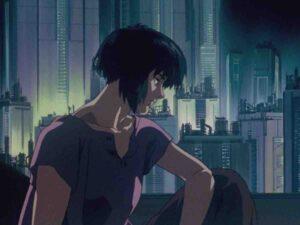From Ergo Proxy (2006) to Psycho-Pass (2012-2019), here are the best cyberpunk anime, ranked.
Cyberpunk, a subgenre of science fiction and a significant part of anime history, focuses on the human experience in a technology-dominated, post-industrial, and dehumanized dystopian future. It’s an extension of the counter-cultural and anti-authoritarian view that was prevalent in 1960s America. It’s basically referred to as ‘low-life high-tech’. The word ‘cyberpunk’ was said to be coined by writer Bruce Bethke in 1982 – a combination of the words ‘cybernetics’ and the popular youth culture of ‘punk’ rock.
However, even before coining the term ‘cyberpunk’, the trend was gradually established in the 1960s and 1970s, like I said. But cyberpunk didn’t develop as an artistic or cultural movement back then. Hence, one can argue about its origin. But in the early 1980s, after Bruce’s own coinage, came author William Gibson’s use of the word ‘cyberspace’. Most importantly, Ridley Scott’s Blade Runner perfectly served the visual outlook and atmosphere of the cyberpunk world in 1982. Though the film failed at the box office, it became an instant cultural phenomenon.
Watch: Blade Runner 2049 Explained
In the same year, Japanese manga artist Katsuhiro Otomo released his first manga series, Akira. Unlike Western cyberpunk, which has its roots in sci-fi literature, Japanese cyberpunk drew inspiration from the 1970s Japanese punk music scene and underground films from directors like Gakuryu Ishii and Shinya Tsukamoto. In 1988, the anime adaptation of Otomo’s Akira firmly established Japanese cyberpunk cinema. Interestingly, the biker gang in Akira was influenced by Ishii’s Crazy Thunder Road (1980). From then on, manga and anime strengthened the cyberpunk subgenre and soon became one of Japan’s most coveted cultural exports.
Here’s lining up the best cyberpunk anime to acquaint you with its themes, aesthetics, and genre conventions:
Best Cyberpunk Anime, Ranked
16. Battle Angel (1993)
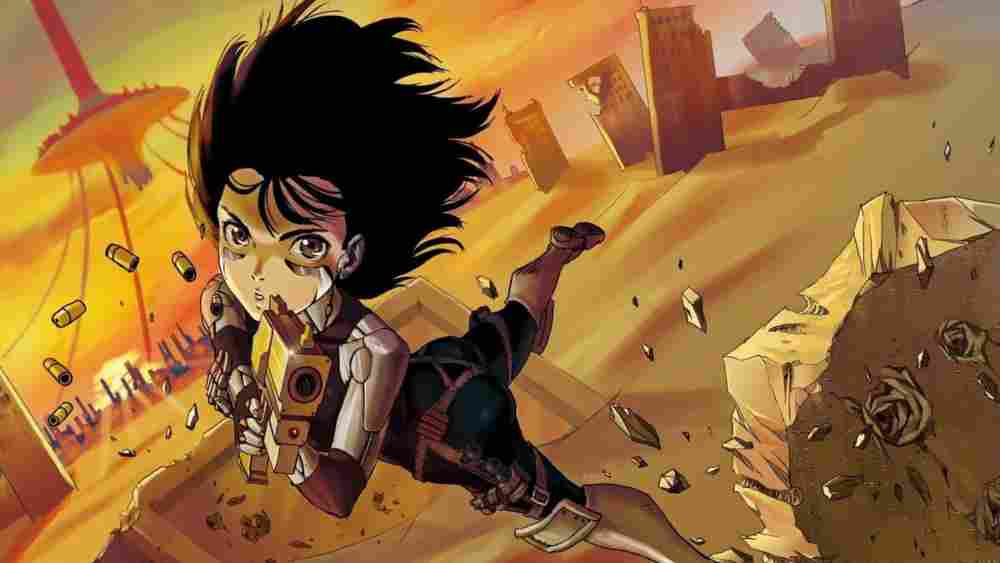
The two-episode cyberpunk OVA (Original Video Animation) was based on Yukito Kishiro’s manga series. Though the manga was published in 9 volumes between 1990 and 1995, the anime only featured a few story arcs from the first two volumes. In fact, the OVA was supposedly made to promote the manga series. Hence, the 54-minute Battle Angel doesn’t develop the characters much. Nonetheless, it has a spellbinding story set-up and stellar animation.
A cyber-doctor named Ido finds a half-destroyed body of a female cyborg. He quickly restores her and finds out that the cyborg named Gally has no memory of her past. Gally navigates her way through the strange planet, which has literally become a garbage dump for Zalem, a colossal city floating in the sky. She soon becomes a bounty hunter and rediscovers her identity. In 2019, the manga series was adapted into a big-budget Hollywood feature, directed by Robert Rodriguez.
15. Cyber City Oedo 808 (1990)
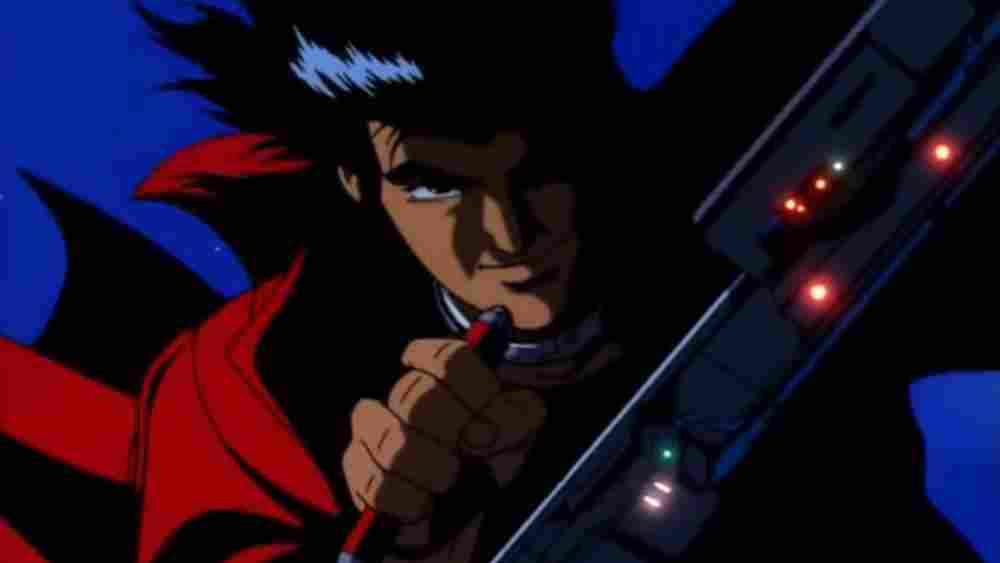
Created by Juzo Mutsuki, this cyberpunk action/thriller is set in the year 2808. Crime is rampant in the hi-tech metropolis of Oedo. To curb the chaos in the city, Cyber police recruit criminals as bounty hunters. Chief Hasegawa, an unorthodox and manipulative law enforcement officer, brings in three felons – Sengoku, Benten, and Goggles – to track down criminals and in exchange promises to reduce their sentence. They wear explosive collars to remind them who’s the master.
The anime unfolds in three episodes. Each focuses on one of the three central characters and their distinct backgrounds. The story set-ups also widely vary in each episode, including a haunted skyscraper and a clever killing machine. The animation presents a bleak and grey world where the complexities of modern life have deeply changed humankind. The nicely paced three episodes also perfectly balance action-filled sequences and character development aspects.
14. Metropolis (2001)
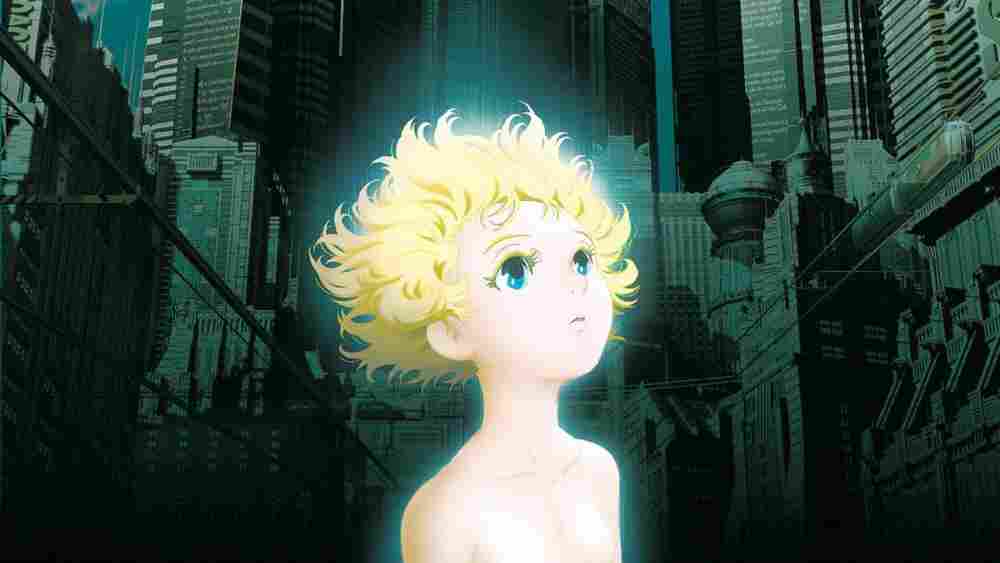
Rintaro’s Metropolis was based on a 1949 Japanese manga by Osamu Tezuka (who also created the Astro Boy manga series). Tekuza was clearly inspired by Fritz Lang’s silent classic Metropolis (1927). The adaptation was done by Katsuhiro Otomo. Both Otomo and Rintaro have borrowed some visual cues and themes from Lang’s original film. The anime is set in a mesmerizing futuristic city that has strictly delineated its citizens according to their class.
Duke Red, the powerful corporate leader who runs the city, controls everything through a huge structure called Ziggurat. This tower controls all the machines and information. Duke Red hires mad scientist Dr. Laughton to guard everything. The scientist also builds for the Duke an ultimate weapon in the form of a robotic girl named Tima. The visuals are gorgeous. Rintaro strikingly mixes traditional animation with CGI. Metropolis may not be in the league of classics, Akira and Ghost in the Shell but comes close.
13. Mardock Scramble Trilogy (2010-2012)

Susumu Kudo’s underappreciated cyberpunk noir is based on Tow Ubukata’s eponymous novel series. Set in a futuristic world, Mardock Scramble explores decaying social structures that perpetuate injustice and criminality. The film series also presents a world of advanced technologies where a comatose patient’s consciousness is transferred to a synthetically created body. Mardock City is known for its high crime rate. Hence, the government introduces a law called ‘Scramble 09’ in order to revive crime witnesses.
That is how teenage prostitute Rune Balot, who’s killed by a devious serial killer and money launderer named Shell, is brought back to life as a cyborg by Doctor Easter. However, what ensues isn’t a simple journey to seek revenge. The three movies focus enough on Rune’s trauma and how she gradually finds autonomy in her new cybernetic body. What’s even more interesting is Rune’s complex dynamics with Oeufcoque, a self-aware, shape-shifting entity that becomes her only true ally.
12. Memories (1995)
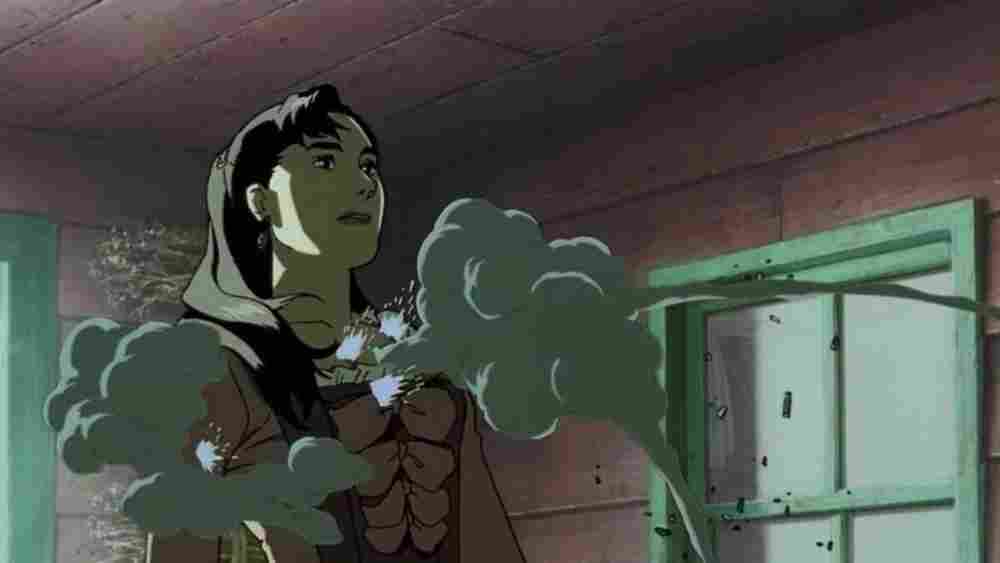
Memories is one of the most fascinating anthology anime which perfectly integrates a solid storyline with a bewitching animation style. The three stories were based on Katsuhiro Otomo’s own manga. The first Magnetic Rose was not only the best in the anthology, but also one of the most brilliant short anime ever made. Koji Morimoto directed it and the script was written by future visionary anime filmmaker Satoshi Kon. Magnetic Rose revolves around a space crew of garbage collectors. They receive a sos call and arrive at a wrecked spaceship to investigate. Gradually, they’re pulled deep into a bizarre anomaly.
The other two shorts are titled Stink Bomb and Cannon Fodder. One is about the funny misadventures of a scientist, and the other looks at a family life in a world that’s incessantly waging war. Cannon Fodder was directed by Otomo himself and it’s an extraordinary visual feast. Its underlying message says a lot about human perseverance and conditioning.
11. Akudama Driver (2020)

The 12-episode cyberpunk anime Akudama Drive is set in futuristic Japan that’s torn by the civil war. A nuclear wasteland separates the region between Kanto and Kansai. After the war, Kansai is ruled by an authoritarian regime, which labels the dangerous criminals of the city as ‘Akudama’. Six of the most skilled Akudama come together for a mysterious job. A young and ordinary-looking girl also joins them. What follows is a set of wonderful twists and brilliantly done tonal shifts.
Akudama Drive takes visual cues and pays homage to several Hollywood films from the 80s and 90s, including the cyberpunk classic Blade Runner (1982). It has deeply entrenched cyberpunk elements into the story’s framework rather than using them to create a specific mood and imagery. The anime unfolds in a police state and showcases how outcasts and dissidents can be easily framed as dangerous criminals. The characters do lack depth, but the culturally relevant critique alongside the world-building skills makes it a satisfying experience.
10. Megazone 23 Trilogy (1985-1989)
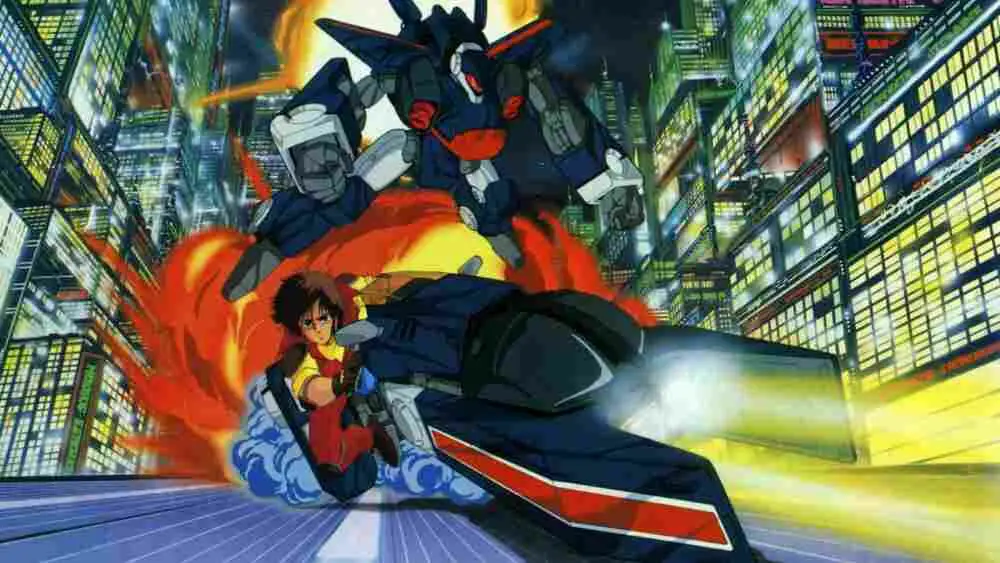
Noboru Ishiguro’s Megazone 23 is an influential and highly entertaining cyberpunk anime that says much about the corruption of power and authority. The first two parts of the trilogy are set in the 24th century when environmental pollution has made Earth uninhabitable. This forces humanity to survive in a giant colony ship called Megazone. However, the populace believes that they’re living in 1985 Tokyo.
The protagonist is Shougo Yahagi, a teenager with a passion for motorcycles. He comes in possession of a strange and powerful prototype bike. This leads him on a path to discover the false reality of his world, and he comes across an artificial intelligence, known as EVE.
Megazone 23 is often credited as the anime that inspired the narrative premise of Wachowskis’ The Matrix (1999). The idea of a simulated reality also influenced films like Dark City, eXistenZ, and Ready Player One. Overall, Megazone 23 is a dark and cynical look at humans and their technology.
9. Bubblegum Crisis (1987-1991)
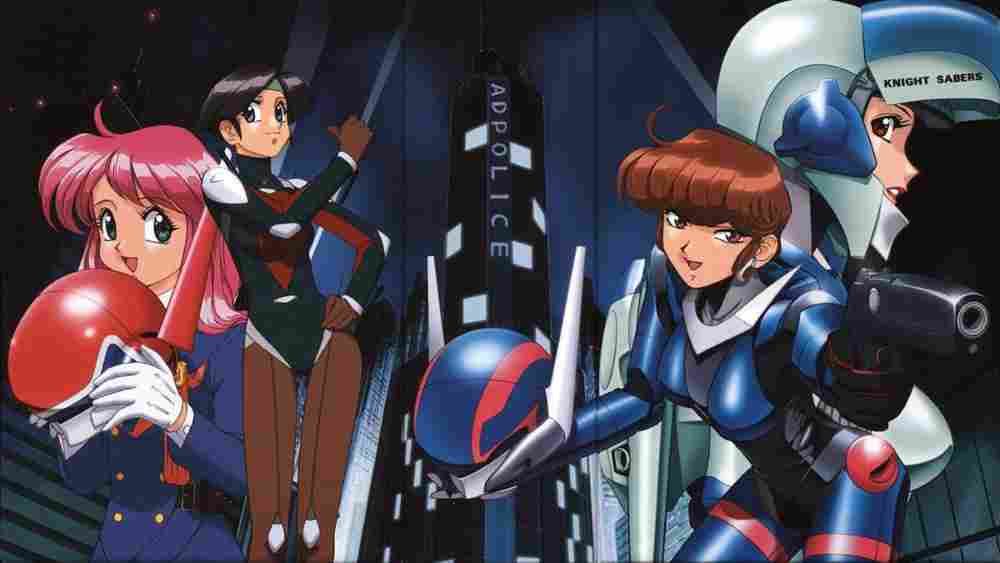
The 8-episode cyberpunk anime series chronicles the adventures of the Knight Sabers, an all-female group of mercenaries. The Knight Sabers patrol the dystopian cyberpunk streets of 2032 Mega Tokyo, fighting against serious crime. Their major challenge is encountering rogue cybernetic beings. In 2025, a powerful earthquake — dubbed the Second Great Kanto Earthquake – wreaks havoc on the Japanese economy. In the wake of this tragedy, a mega-corporation named Genom creates cybernetic entities and gains immense power. The artificial life forms called ‘Boomers’ helped in Japan’s recovery.
However, the Boomers too malfunction and commit crimes. Bubblegum Crisis was heavily influenced by Blade Runner (1982), Streets of Fire (1984), and The Terminator (1984). The writer of the series Toshimichi Suzuki was also passionate about mecha designs. Bubblegum Crisis became one of the first popular anime series in the West. Apart from the original series, there are also spin-offs, prequels, and reboots set in the Bubblegum Universe.
8. Ghost in the Shell 2: Innocence (2004)
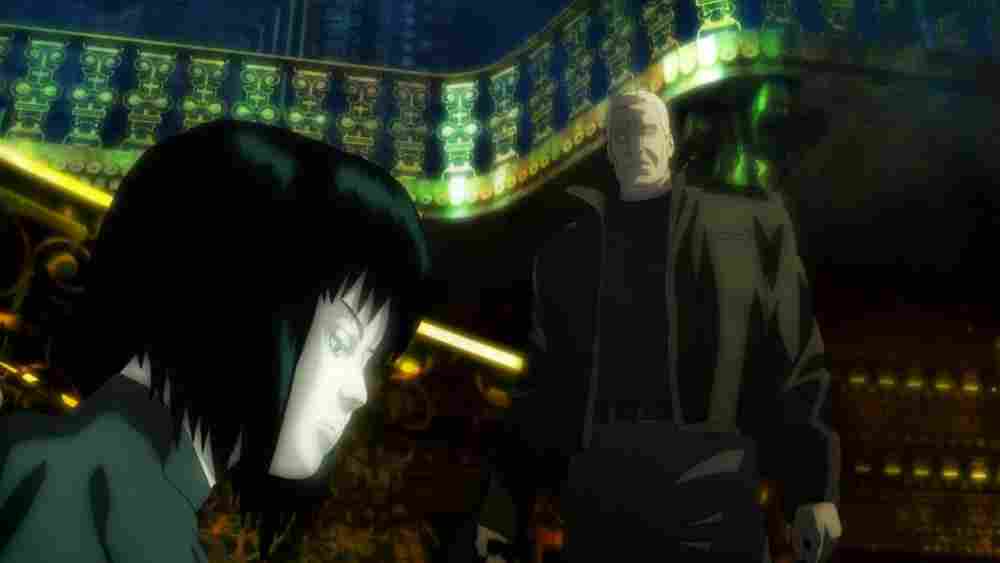
Mamoru Oshii’s sequel to the 1995 anime has an oblique plot. But it offers a feast of jaw-dropping images and gradually reveals its philosophical core. Batou, the mechanized detective who works under the command of Major Motoko Kusanagi (in the original) plays the central role in the sequel. He is assigned a human partner named Togusa. They investigate a series of murder cases where female sex droids have murdered their owners.
Japan’s obsession with dolls is deeply incorporated into the nation’s cultural history. And Oshii uses the traditional roots of dolls to fascinatingly explore the theme of self-awareness and spirit within humans and mechanized cyborgs. Oshii makes us swallow the dense philosophical musings through his enthralling visuals. Like Appleseed, the animation is a blend of CGI and hand-drawn animation. This offers a more nuanced visual texture and deep-focus background.
7. Ghost in the Shell: Stand Alone Complex (2002-2005)
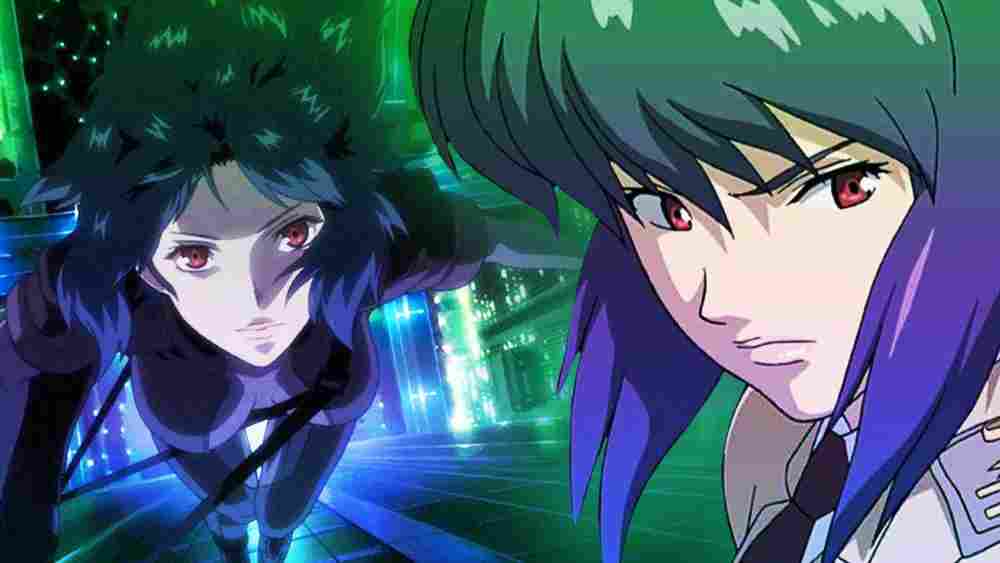
The complex sociopolitical framework in the first Ghost in the Shell anime might be a little hard to comprehend in a single viewing. Thankfully, the resounding success of the anime made possible the follow-up series and features. Created by Kenji Kamiyama, this 52-episode cyberpunk anime series focused more on Major Kusanagi’s Section 9. The series has better story arcs for the characters and gets deep into this world’s politics. There are also plenty of cool and memorable action sequences.
The series sees Section 9 clashing with many enemies, including the intellectual terrorist The Laughing Man and Hideo Kuze, the hacker of cyber brains. The series also juggles different tones for each episode and is set in various places in the cyberpunk future. The second season is more introspective and less fun than the first. Nevertheless, the former features more relevant and thought-provoking political storylines.
6. Texhnolyze (2003)
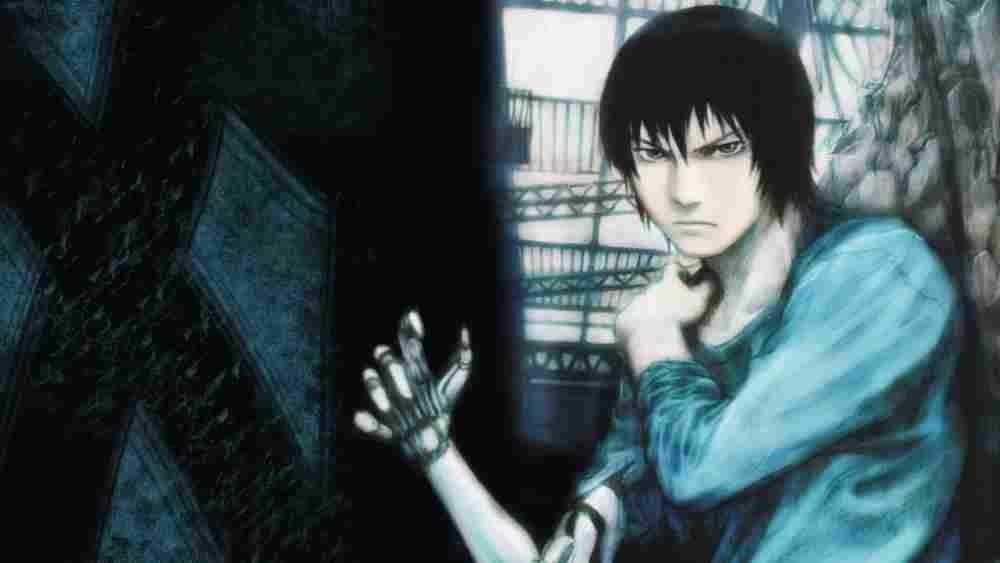
The cyberpunk genre, in general, deals with complex storylines and themes that can be initially confusing. But if you stay with it, things will gradually start to make sense, and the payoff is worth it. This is the truth with most cyberpunk classics from Blade Runner, and Akira to Ghost in the Shell and The Matrix. Of course, there are cyberpunk movies with perplexing beginnings and even worse follow-ups. However, the experimental and very mature anime of Yoshitoshi Abe starts off as opaque, leads to a fascinatingly dark set-up, and culminates with a profound ending.
Unlike Abe’s Serial Experiments Lain, Texhnolyze is set in an underground metropolis called Lukuss. The place is ruled by rival factions of yakuza, and is beyond the reach of the law. These gangs trade illegal cybernetic limbs, and this process of bionic replacement is called Texhnolyze. It’s an unorthodox series, both in terms of storytelling and imagery. Strongly recommended for fans of the cyberpunk genre interested in expanding their horizons.
5. Akira (1988)
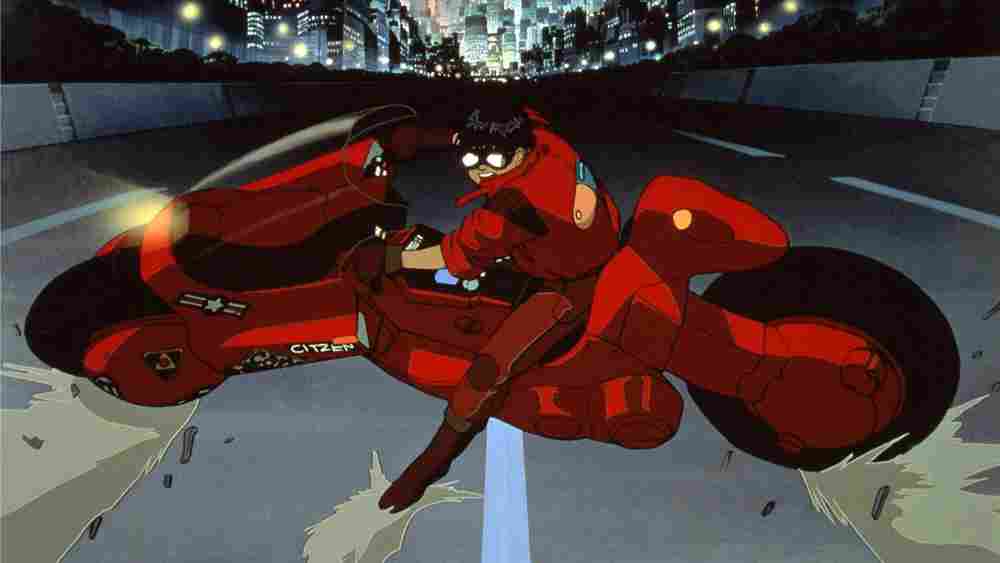
Katsuhiro Otomo’s Akira is an iconic anime that perfectly realized the cyberpunk themes after Ridley Scott’s Blade Runner (1982). It’s an adaptation of Otomo’s own manga series. This cyberpunk action extravaganza is set in the year 2019 in Neo-Tokyo, 30 years after the devastation of World War III. The general populace is dissatisfied with modern life, and the youth immerse themselves in hedonistic pursuits. The narrative revolves around two biker gang members named Tetsuo and Kaneda. They come across a secret government project that’s involved in developing new weaponry through biological means.
Like any story that unfolds in fresh territory and deals with complex themes, Akira can be perplexing to comprehend the first viewing. Though the central plot is about a psychologically damaged young man, a lot goes on in Otomo’s world, from government conspiracies to economic disintegration. At the same time, Akira is a mesmerizing experience largely due to Otomo’s vibrant and painstakingly detailed animation. Its awe-inspiring visuals still exert a revolutionary influence on cinematic art.
4. Ergo Proxy (2006)
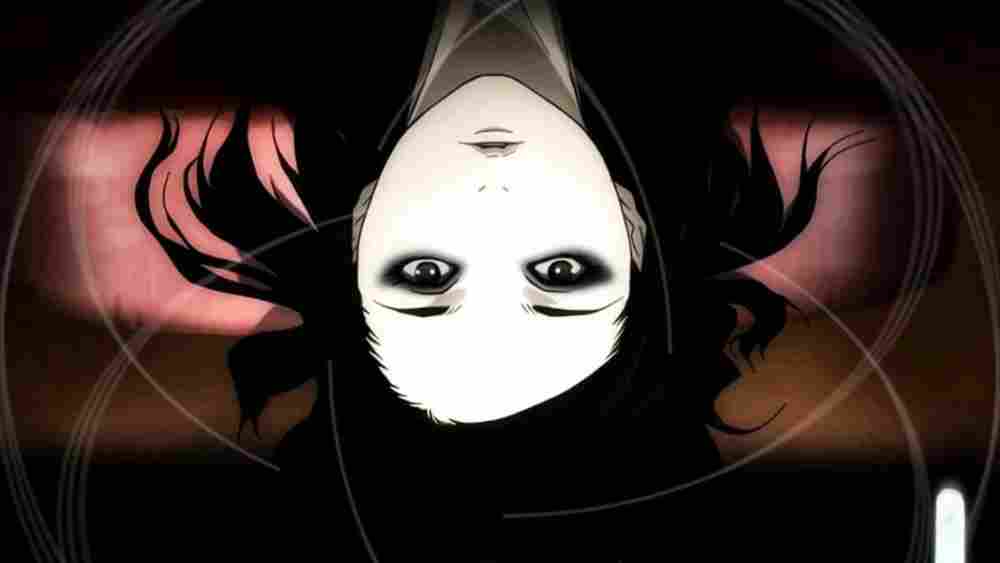
Ergo Proxy is a dark and puzzling anime series, set in the post-apocalyptic future. It takes the basic cyberpunk components like hi-fi technology and emotionless existence and takes it to the next level with its dense plotting and deep philosophical themes. At the outset, the narrative revolves around a detective named Re-I Mayer. It’s set in the domed city of Romdo. The population is strictly controlled by the government. Hence the workforce is largely made up of androids known as AutoReivs.
But the city’s peace is disrupted when a series of killings happen and all clues lead to a dangerous entity known as Proxy. On the other hand, a virus is increasingly affecting AutoReivs and gives them the power of self-awareness. Written by Dai Sato, Ergo Proxy is a rare, visually exciting, and intellectually challenging anime series. The ending may be a little disappointing, but its complex plot and ambitious themes offer a singular viewing experience.
3. Serial Experiments Lain (1998)
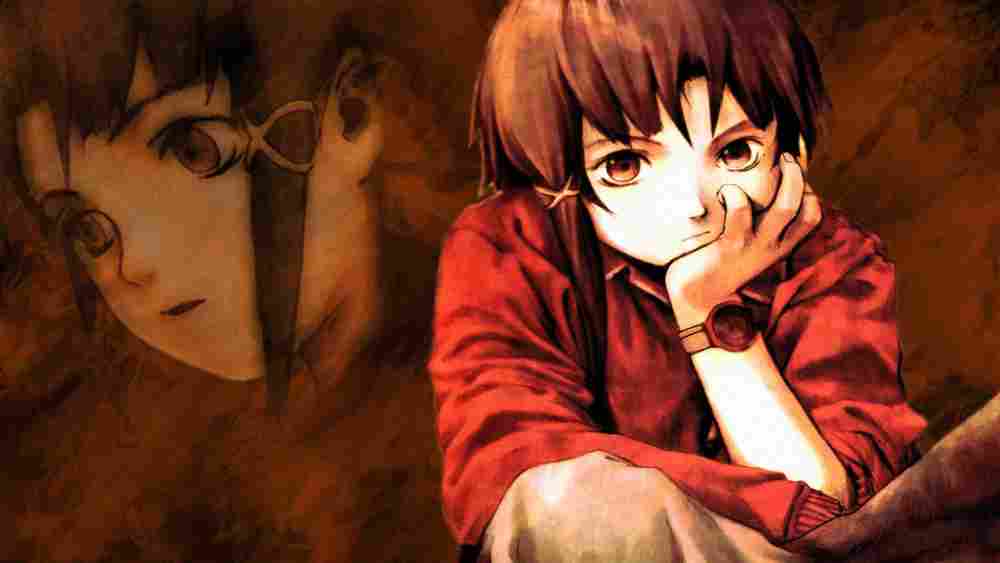
Serial Experiments Lain is one of the prophetic works of the internet era and virtual reality. Until I watched Lain, I thought Kiyoshi Kurosawa’s ghost story Pulse (2001) was one of the earliest works to tackle the identity crisis of the digital age. Lain handles this theme even better and in a strangely moving manner. Directed by Ryutaro Nakamura, the 13-episode anime series is replete with a bleak, disorienting atmosphere. The story focuses on a shy 14-year-old junior high student, Lain Iwakura. She feels disconnected from everyone, including her family, and suffers from hallucinations and blackouts.
One day, she receives an e-mail from a dead classmate. This sets off Lain on a strange journey into the virtual world known as the Wired. The series offers an interesting commentary on the nature of reality, particularly one created by the digital world. The story and its dense themes demand our patience. For psychedelic imagery and psychological horror fans, Serial Experiments Lain is a must-watch.
2. Psycho-Pass (2012-2019)
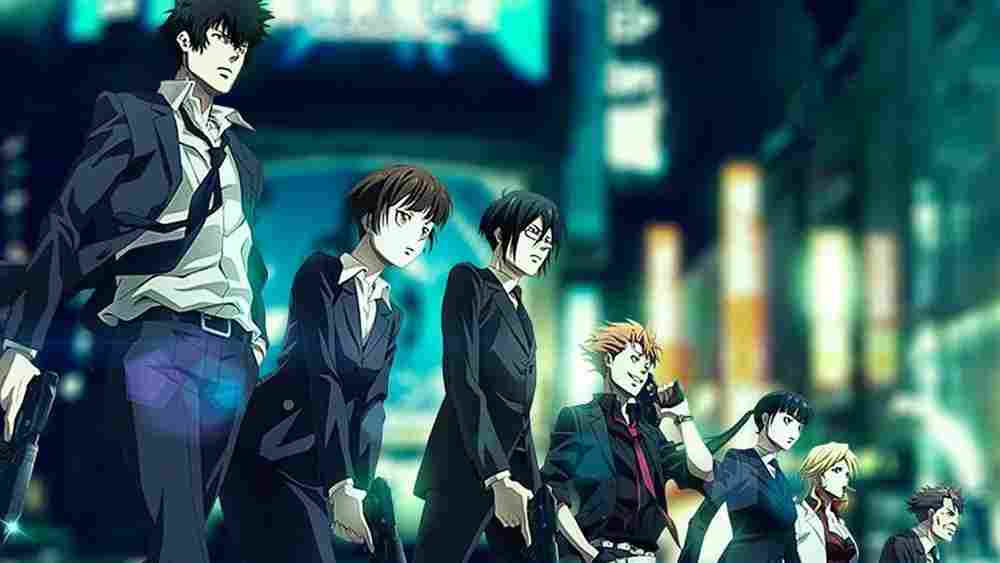
The first season of Psycho-Pass was released in 2012 and was soon considered the most groundbreaking cyberpunk anime after Akira and Ghost in the Shell. Created by Tow Ubukata (author of Mardock Scramble novels), the series is built on a conceit that slightly resembles Minority Report. In this case, the law enforcement agency of futuristic Japan concludes that crime is committed by individuals who are psychologically capable. Therefore, every citizen carries a Psycho-Pass which is monitored by the Sybil System. The system monitors an individual’s criminal intent through their psychological state.
The central character is Akane Tsunemori, a rookie cop who’s trying to understand the reality of crime prevention. One interesting theme of Psycho-Pass is depicting how the establishment employs technology to define our life paths and gradually trap us. Similar to Philip K. Dick’s stories, the series brilliantly extrapolates on the existing modern technologies to look at a dystopian society.
1. Ghost in the Shell (1995)

Mamoru Oshii’s Ghost in the Shell is the first of the many adaptations of Masamune Shirow’s 1989 manga series. It continues to have a profound influence on global cinema, and alongside Akira, introduced anime to the international audience. Oshii’s anime is set in the year 2029 when human society has mastered cybernetic technology. It’s a post-apocalyptic world where human body parts can be replaced with cybernetic parts. The story follows Major Motoko Kusanagi, the cybernetically-enhanced chief of the Public Security Unit known as Section 9.
Soon, Kusanagi goes after a mysterious and deadly hacker, called Puppet Master. The case brings forth an existential crisis and pushes our heroine to wonder ‘What makes her human?’ Ghost in the Shell is a somber and mature anime that heavily relies on symbolism and philosophy. The powerful cyberpunk aesthetics of an urban wasteland and Kenji Kawai’s haunting score add to the experience.
Conclusion
Japan was an economic powerhouse in the 1980s. It was believed that the nation would overtake the US and other Western nations to become the powerful, single most creator of advanced technology. Hence it was no wonder that cyberpunk had a huge cultural influence in Japan. While Japanese cyberpunk obsesses over the many dangers of a technologically-advanced future, it also reflects on its traumatic past; for instance, the nuclear holocaust in Akira. The US outgrew its trade anxieties over Japan, but the wave of cyberpunk is still strongly flowing in Japan. An anime adaptation of the popular action RPG Cyberpunk 2077 is coming up and there will be no shortage of material within the genre for the next few years.
